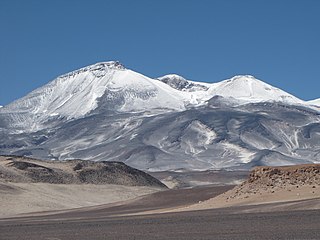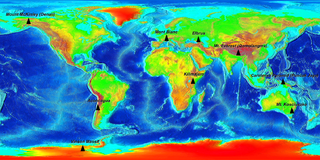 W
WPeak bagging or hill bagging is an activity in which hikers, climbers, and mountaineers attempt to reach a collection of summits, published in the form of a list. This activity has been popularized around the world, with lists such as 100 Famous Japanese Mountains, the Sacred Mountains of China, the Seven Summits, and the eight-thousanders becoming the subject of mass public interest.
 W
WThe following sortable table comprises the 200 highest mountain peaks of greater North America with at least 500 meters of topographic prominence.
 W
WThe Eight Summits are the collective name for eight highest mountains in the seven continents. It is a combined name for several versions of "Seven Summits", due to different ways in naming the highest mountains.
 W
WThe International Mountaineering and Climbing Federation or UIAA recognises eight-thousanders as the 14 mountains that are more than 8,000 metres (26,247 ft) in height above sea level, and are considered to be sufficiently independent from neighbouring peaks. However, there is no precise definition of the criteria used to assess independence, and, since 2012, the UIAA has been involved in a process to consider whether the list should be expanded to 20 mountains. All eight-thousanders are located in the Himalayan and Karakoram mountain ranges in Asia, and their summits are in the death zone.
 W
WThe Indonesian Seven Summits Expedition Mahitala Unpar (ISSEMU) was a team of four mountaineers from Indonesia that successfully climbed the Seven Summits between 2009 and 2011. The last peak of their expedition was Denali in Alaska, which they reached on July 7, 2011. This marked the first time a team from Indonesia had completed the challenge.
 W
WAs of June 2019, this is the list of the 282 Munros, recognised by the Scottish Mountaineering Club ("SMC") and The Munro Society. The Munros are listed by "Section" per the Munro's Tables, and in descending order of height within each section. Hills are divided by sub-region, and hills with less than 200 m (656 ft) relative height are indented. The term Real Munro is used for hills with a prominence above 150 m (492 ft), which is the threshold for a Marilyn. For a single table of all 282 Munros, or all 227 Munro Tops, ranked by height and by prominence, see the "List of Munro mountains in Scotland".
 W
WScotland is the most mountainous country in the United Kingdom. Scotland's mountain ranges can be divided, in a roughly north to south direction, into: the Scottish Highlands and the Central Belt and Southern Uplands in the Scottish Lowlands. The highlands contains the country's main mountain ranges, but many hills and mountains are to be found south of these as well. The highlands includes Britain's loftiest peaks, the Munros, the highest being Ben Nevis at 1,344.53 m. The below lists are not exhaustive; there are countless subranges throughout the country.
 W
WA Munro is defined as a mountain in Scotland with a height over 3,000 feet (914.4 m), and which is on the Scottish Mountaineering Club (SMC) official list of Munros; there is no explicit topographical prominence requirement. The best known Munro is Ben Nevis, the highest mountain in the British Isles at 1,345 metres (4,411 ft).
 W
WThe Seven Third Summits are the third-highest mountains of each of the seven continents. All of these mountain peaks are separate peaks rather than a sub-peak of the continents' high point. Christian Stangl from Austria claims to be the first person to reach the summit of all seven third summit mountains after climbing Puncak Mandala and Puncak Trikora. He did this as a part of his Triple Seven Summits project. Because of glacial melting and the disagreement over exactly which three peaks are the tallest in the Australian continent, Stangl also climbed several additional candidate peaks including Sumantri and Ngga Pulu.
 W
WThe Seven Second Summits are the second-highest mountains of each of the seven continents. All of these mountain peaks are separate peaks rather than a sub-peak of the continents' high point. The Seven Second Summits are considered by many mountaineers and geographers as a much harder challenge than the traditional Seven Summits.
 W
WThe Seven Summits are the highest mountains of each of the seven continents. Climbing to the summit of all of them is regarded as a mountaineering challenge, first achieved on 30 April 1985 by Richard Bass. Completing the Seven Summits and additionally reaching the north and south poles has been dubbed the Explorers Grand Slam.
 W
WThe Volcanic Seven Summits are the highest volcanoes on each of the seven continents, just as the Seven Summits are the highest peaks on each of the seven continents. Summiting all seven is regarded as a mountaineering challenge, first postulated as such in 1999.